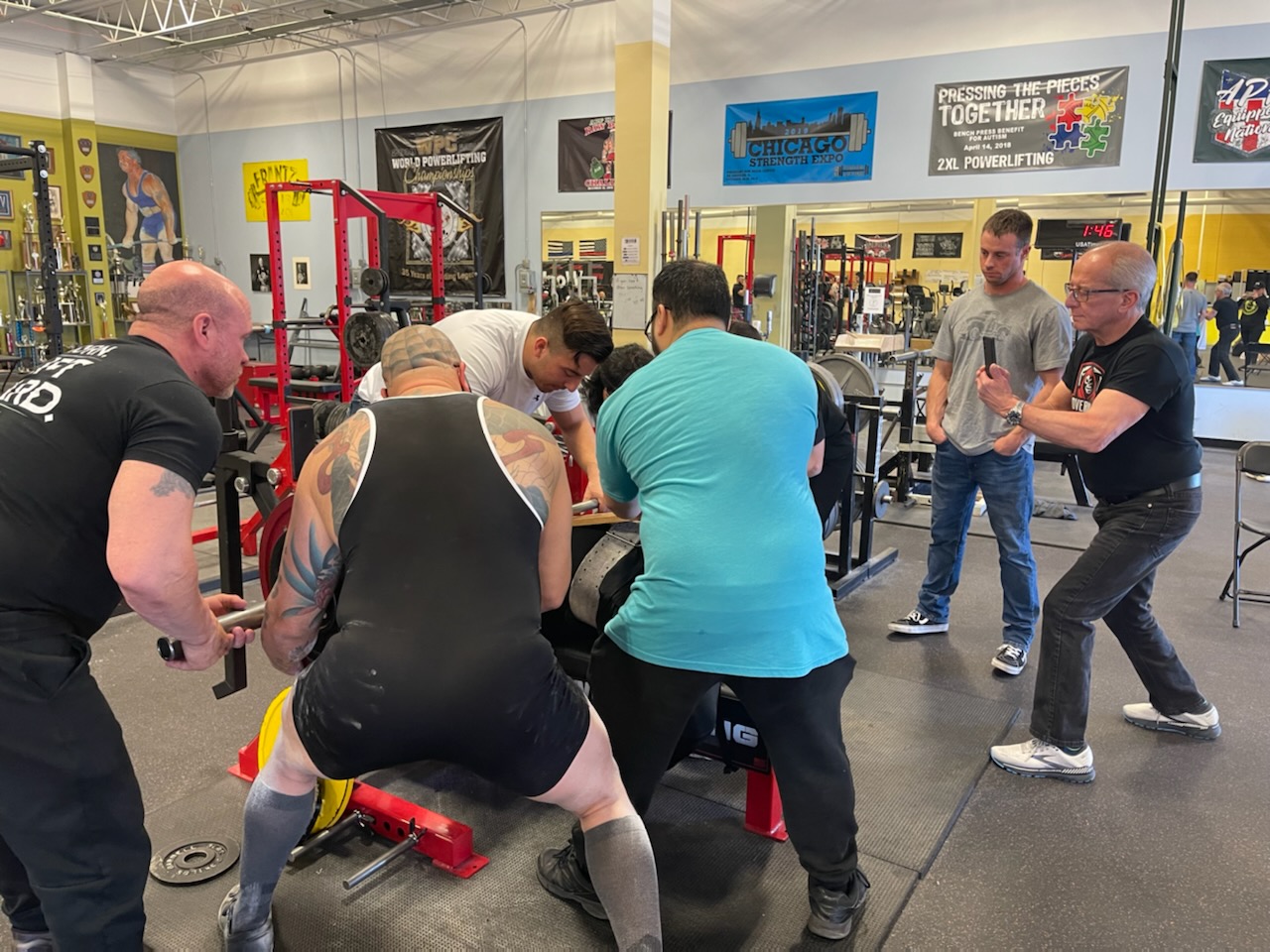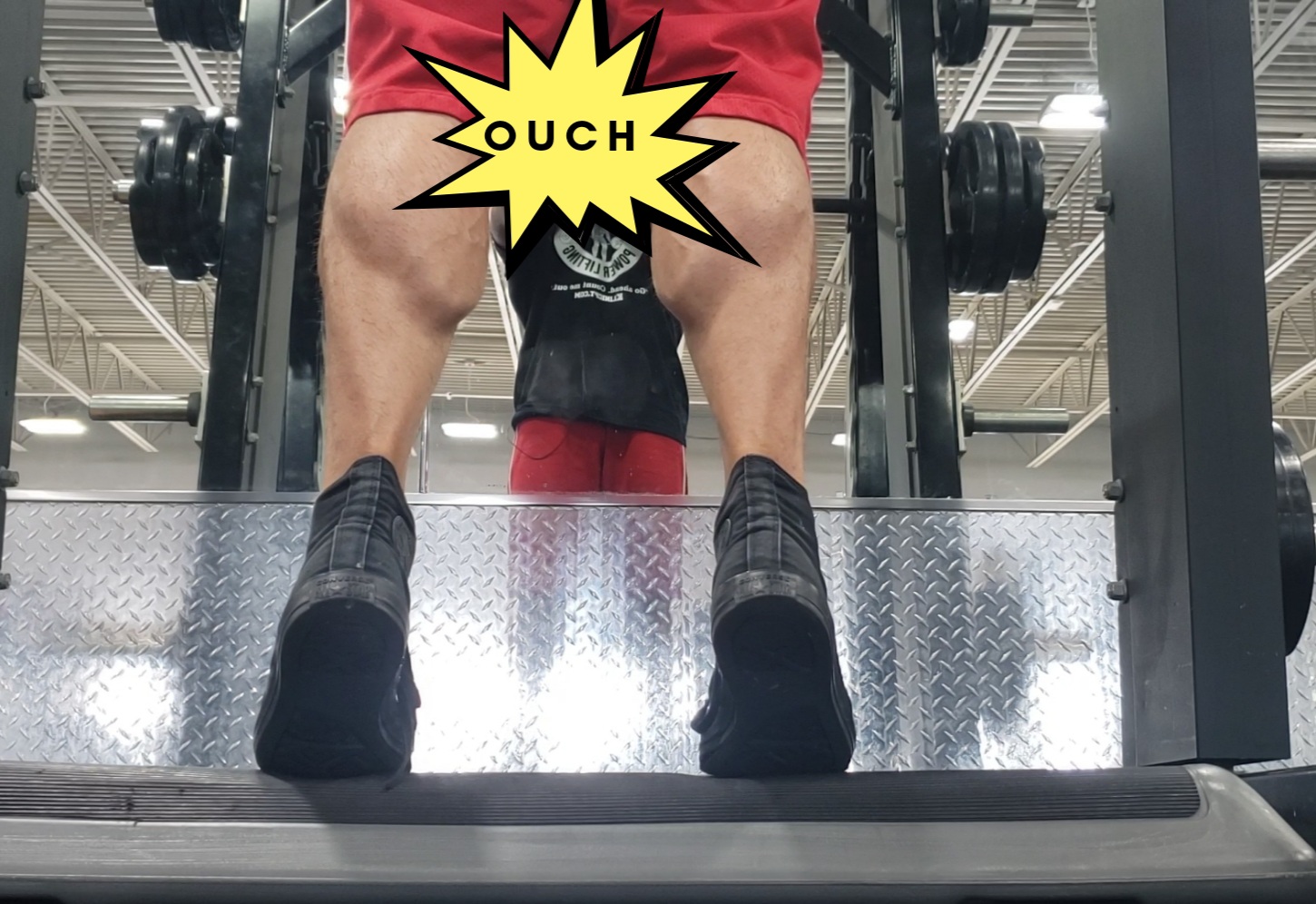The interosseous membrane is a dense, fibrous tissue that connects the radius and ulna bones together, similar to the tibia and fibula in the lower limb. Laid out in an oblique orientation, its responsibility is for load sharing from the radius to the ulna and stability of the forearm.
An injury to the interosseous membrane in the average person is rare, usually caused from falling on an outstretched arm or motor vehicle accident. In equipped powerlifting it is more common and under-diagnosed.
How to Prevent Shin Splints of the Forearm in Equipped Benching?
I have personally experienced when I first started using multiply shirts because my body was not prepared for the load in my forearms. The fabric in an Inzer or Overkill shirt are built to handle hundreds of pounds without even a tear. Our bodies, no matter how sound your raw base is, may not be prepared. Under prepared plus poor coaching can lead to injury.
Shin splints in the leg (“medial tibial stress syndrome”) are caused from repetitive, high uptake in walking or running. Microscopic tearing of the membrane can occur, and lead to stress fractures in the tibia without proper rest, supplementation (Vit D) and support (shoeware).
The same kind of injury can occurred when I jumped into my Super Katana double ply shirt. My raw bench was somewhere in the mid 300’s at the time, to suddenly handling in the low 600’s off boards. Since I come from the overload philosophy, I handled heavy weight off boards routinely once per week. After about 4-6 weeks I began developing mid forearm pain.
It began to keep me up at night because it burned. Ice wasn’t sufficeint. Then one day at work I looked down and noticed bruising in my forearms. Worried, I went down the hall and got the doctor to take an X-Ray to rule out a stress fracture. No stress fracture was present, and I got a compliment about the density of my bone (double Woo Hoo!). So now puzzled I investigated in the Powerlifting Watch and found the answer
The weight being loaded in our hands is transferred down into the radius, shifting the ulna away in a rotatory fashion, and pulls the interosseous membrane apart so slightly. With sufficient rest the membrane can heal and regain stability. Without it slight tearing occurs and manifested into bruising which makes its way to the skin surface.
Similar to not wearing proper shoeware not having decent wrist wraps transfers even more load to the wrists. But even with durable wraps the load still has to go somewhere in our bodies. Continuing to push through the pain (pun intended) will not lead to tough-guy points, unless you’re close to concluding meet prep.
In fact, pain can be anticipated to some degree at this point. What can happen over time is the body will lay down osteophytes where the bruising occurred, impairing joint physiology and reduce stability. Stress fractures can also occur in the radius.
Guide to Fixing Shoulder Pain for Powerlifters

The remedy is a break from shirtted benching unless you’re near the end of a meet prep. I recommend a week or two of zero benching or pressing of any kind. Ice routinely after a workout and before bed. Removing the inflammation is key.
Avoid deep tissue massage because that will break down the membrane tissue even further – the opposite of what we’re trying to achieve! During your break from shirtted bench substitute training with rotator cuff and more upper back work.
I encourage to have different levels of wrist wrap strength: old/beaten up pair, moderate strength and super durable for when you wean back in.
When the pain is gone you are safe to return to the shirt. Finish on a positive note and think about proper training splints going forward. Email me if you want to devise a specific program.




